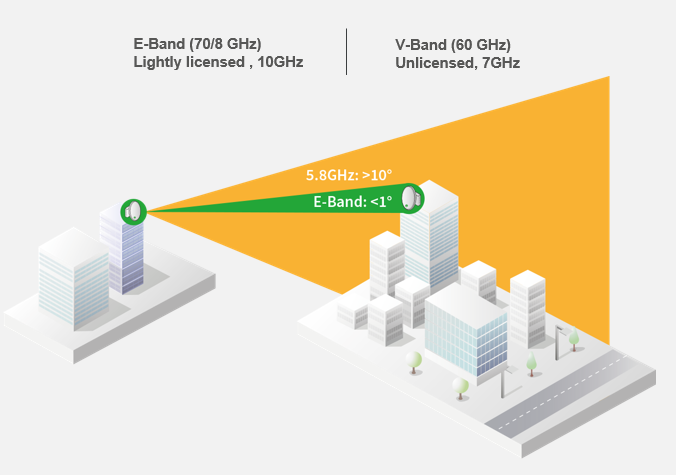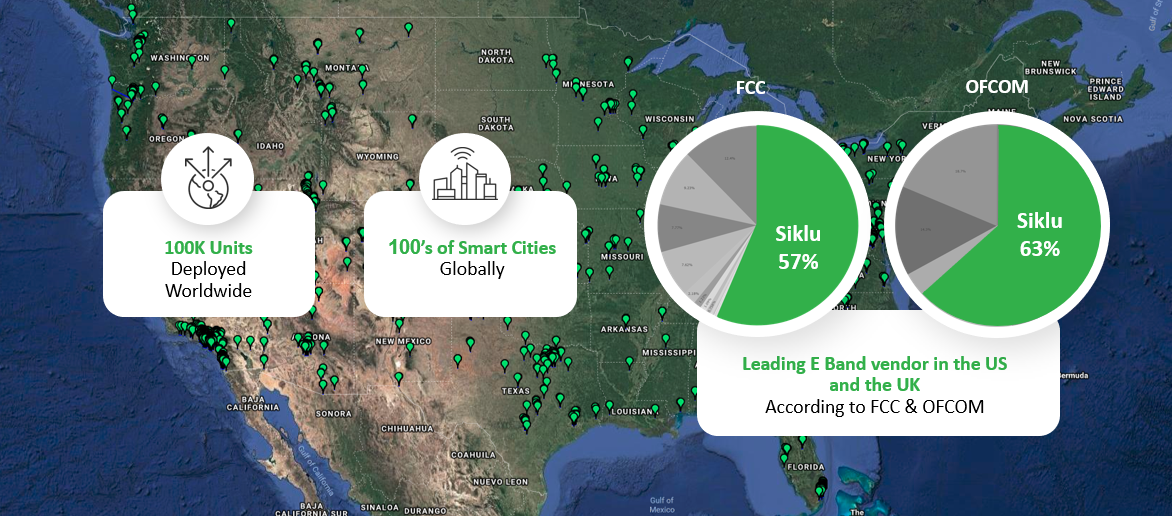Recently, all we hear about is change. How the virus changed our lives, how the virus changed our environment, how it will change our future. All of this is true. All is concerning. Still, life continues albeit it is stormy. And during these stormy times, you need to rely on something stable, something you can hold to, a solid ground.
We all want to keep going, keep doing our jobs, despite the social distancing, despite working remotely. So where is this solid ground, what’s the one thing that the virus didn’t change?
The virus didn’t change the Physics.
Rely on this solid background to update your connectivity toolkit.
The foundation of wireless communication
A vast amount of our communication is done wirelessly even the personal ones. We greet each other wirelessly, we do Passover Seder or Easter wirelessly, we even shop without a physical connection.
So what’s the most basic thing about wireless? It is the Shannon-Hartley Capacity Theorem:

After becoming experts in the exponential curves these days, it is much easier to understand the math and implications behind this equation and its real-life applications.
In simple words: Speed = Bandwidth X Log ( Quality of Propagation & Interference ) or your capacity depends on the channel size and the quality of your signal.
In the equation, the C is the speed or channel capacity and can be expressed in bits per second. Ultimately, we all want more speed. There are 2 ways to achieve it:
- Increase the B, which is the channel bandwidth
- Or increase the signal to noise ratio (s/n) or signal quality. This can be done by reducing the noise/interference (n) or improving the received signal power (s)
If you double the Bandwidth, at the same s/n, the capacity will double as well.
But what if there is no more channel bandwidth available? You can try to increase the signal to noise ratio. It will enable higher-order modulations resulting in more bits/Hz, therefore increasing the capacity. Now, remember those logarithmic curves? To achieve a linear increase in a capacity such as a doubling noted above, the s/n ratio should increase exponentially, because of the function. In other words, if you want to achieve similar performance gains by improving s/n instead of using bigger channels you will need to improve this by the square of the s/n. Not times two, but to the power of 2. If you want 10 times more capacity, you can utilize 10 times more bandwidth or increase the signal to noise ratio to the power of ten better than the original:

The Shannon-Hartley theorem shows us, that to increase capacity, you need to either increase the channel’ size or work much harder and try to increase the signal to noise ratio.
Moving from physics to practice
In sub 6GHz and traditional Microwave (MW) bands, a typical channel size is measured in 10’s of Megahertz, maybe in some cases as higher as 160MHz.
In unlicensed 5GHz you can aggregate several channels or 20, 40, or 80MHz however, because of the spectrum characteristics, you’ll probably decrease the s/n severely due to interference and won’t be able to achieve the full benefit of the channel aggregation. If you can find that amount of “clean” spectrum to begin with.
In licensed MW, channel bonding will require purchasing additional channels, which is not always available. You’ll need to go through a lengthy process of link registration with the regulator and installation of additional gear.
So what’s the solution?
If you go to the higher frequency bands such as the mmWave bands of 60,70/80GHz, you’ll be able to kill two birds with one stone:
- You’ll have much wider channels and there will be more channels available. A total of 24GHz of spectrum is available. Gigahertz, not megahertz.
- The free-space loss will be higher, but it will be compensated by a higher antenna gain on both the transmitting and the receiving sides. Therefore higher suppression of the interferer and at the same time higher amplification of the signal, therefore, you’ll get a better signal to noise ratio as well.

In commercially available equipment, the sizes of the channels in V-band (unlicensed 60GHz band) can be anywhere between 250MHz up to 2.1GHz. More than 10x time wider than the theoretical ability of 5GHz systems that range from 20Mhz up to a maximum of 160MHz.

The available spectrum in the V-band in the US is 14GHz. This is more than all other frequency bands summed together. Therefore, many wide, non-overlapping channels are available.
The same situation exists with the lightly licensed E-band frequencies. Commercially available products utilize 2GHz channels, delivering an interference-free 10Gbps FD connection.
Another thing to consider is the equipment cost. In traditional Microwave systems, the widest channel in the US is 80MHz. Which is commonly not available due to congestion of already deployed radios. Therefore to increase the capacity one needs to g to very high modulation schemes such as 1024 QAM, which require bery high end components. This in turn drives the cost points of the systems to thousands of dollars. It is time to reconsider your connectivity strategy.
There is a very small chance you have not heard about mmWave before.
Or, maybe you had concerns about other factors: like rain attenuation and oxygen absorption. You are right, these predictable factors can limit the achievable distance to 3 miles for E-band and 0.7 miles for V-band technology.
Yet, there are too many advantages in these millimeter-wave bands to be neglected:
- Ability to achieve multi-gigabit capacity without interference because of physical characteristics
- Rapid deployment. It has to do with V-band being unlicensed and E-band being lightly licensed bands. I’ve never seen a single case when FCC rejected E-band license, which is usually processed overnight
Last but not least it is common for fiber to feed these connections. Often times mmWave wireless can fill this role with fiber being a backup connection. Fiber is great as a long term asset when you have plenty of time to deploy and return your investment. Is this the case today? Are you willing to expose your people digging up the streets or prefer 2-hour installations to deliver the same performance? Are you going to go through a lengthy budget approval process before connecting a residential neighborhood or would you prefer a minimum upfront investment to enable you to hit the ground running?
Choose a trusted partner

The airShanon capacity law was derived and introduced in 1948.
At Siklu, we’ve been developing mmWave technology delivering on gigabit speeds even before the previous crisis, since 2008. We’ve delivered more than 100,000 units that operate in 60, 70 and 80Ghz to more than 2,000 service providers.
That’s solid ground you can hold to, a partner you can trust.
Schedule a demo today or talk to our experts to get an advice on how to sharpen the tools in your connectivity toolkit.